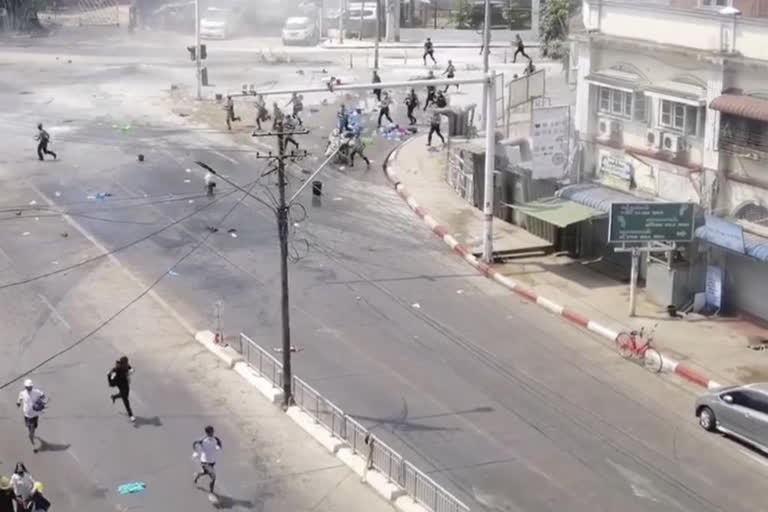Jakarta:The soldiers in rural Myanmar twisted the young man's skin with pliers and kicked him in the chest until he couldn't breathe. Then they taunted him about his family until his heart ached, too: Your mom, they jeered, cannot save you anymore. The young man and his friend, randomly arrested as they rode their bikes home, had been subjected to hours of agony inside a town hall transformed by the military into a torture center. I'm going to die, the young man told himself, stars exploding before his eyes. I love you, mom.'
Since its takeover of the government in February, the Myanmar military has been torturing those it has detained in a methodical and systemic way across the country, The Associated Press has found in interviews with 28 people imprisoned and released in recent months. Based also on photographic evidence, sketches and letters, along with testimony from two military captains and an aide to a high-ranking commander, the AP investigation provides the most comprehensive look since the takeover into a secretive detention system that has held more than 9,000 people.
While most of the torture has occurred inside military compounds, the military, known as the Tatmadaw, has also transformed public facilities such as community halls into interrogation centers, prisoners said. The AP identified a dozen interrogation centers in use across Myanmar, in addition to prisons and police lockups. The prisoners interviewed came from every corner of the country, and ranged from a 16-year-old girl to monks. Some were detained for protesting against the military, others for no discernible reason. Multiple military units and police were involved in the interrogations, their methods of torture similar across Myanmar.
The Myanmar military has a long history of torture, particularly before the country began transitioning toward democracy in 2010. While torture in recent years was most often recorded in ethnic regions, its use has now returned across the country, AP's investigation found. The vast majority of torture techniques described by prisoners were similar to those of the past, including electric shocks, near-drownings and relentless beatings. But this time, the torture is the worst it's ever been in scale and severity, according to the Assistance Association for Political Prisoners, which monitors deaths and arrests. Since February, the group says, security forces have killed more than 1,200 people, including at least 131 detainees tortured to death.
The military tortures detainees, first for revenge, then for information, says Ko Bo Kyi, AAPP's joint secretary and a former political prisoner. I think in many ways the military has become even more brutal. The military has also taken steps to hide evidence that it has tortured prisoners, with several prisoners saying interrogators brutalized only the parts of their bodies that could be hidden by clothes. An aide to the highest-ranking army official in western Myanmar's Chin state told the AP that soldiers covered up the deaths of two tortured prisoners, forcing a military doctor to falsify their autopsy reports.
Also read:Myanmar's Suu Kyi pleads not guilty to breaking virus rules
